Ice Cream Systems (ICS)
Ice Cream Systems (ICS): Balance sheet income statement post-closing trial balance Ice Cream Systems (ICS): Balance sheetIncome statementPost-closing trial balance
Ice Cream Systems (ICS): Balance sheet income statement post-closing trial balance
Ice Cream Systems (ICS):
- Balance sheet
- Income statement
- Post-closing trial balance
Ice Cream Systems (ICS): Balance sheet income statement post-closing trial balance Ice Cream Systems (ICS): Balance sheetIncome statementPost-closing trial balance
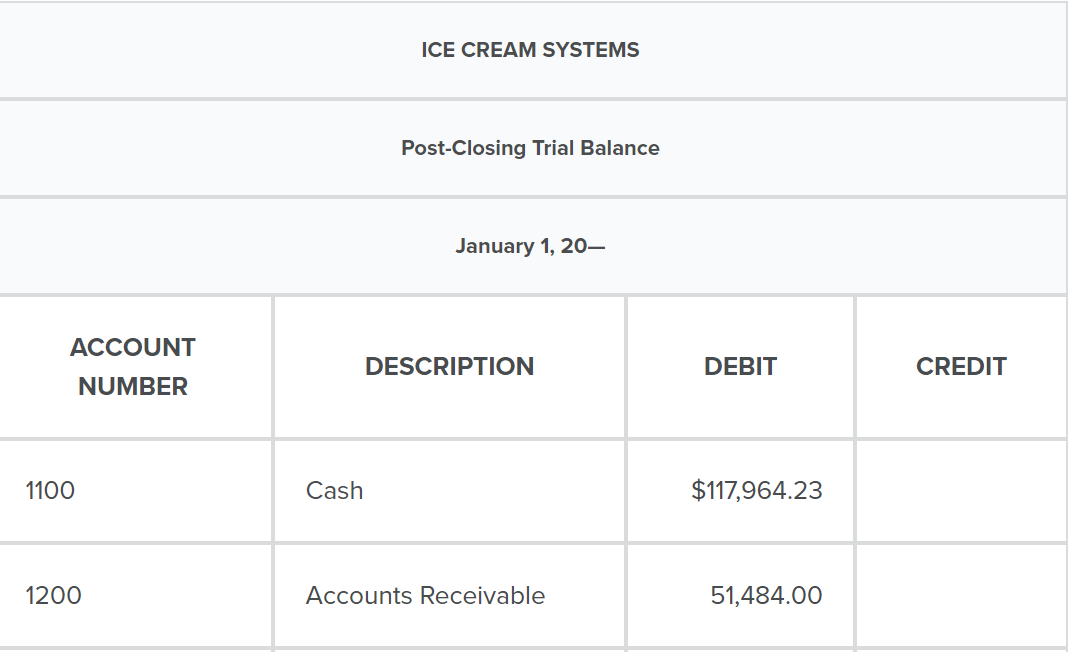
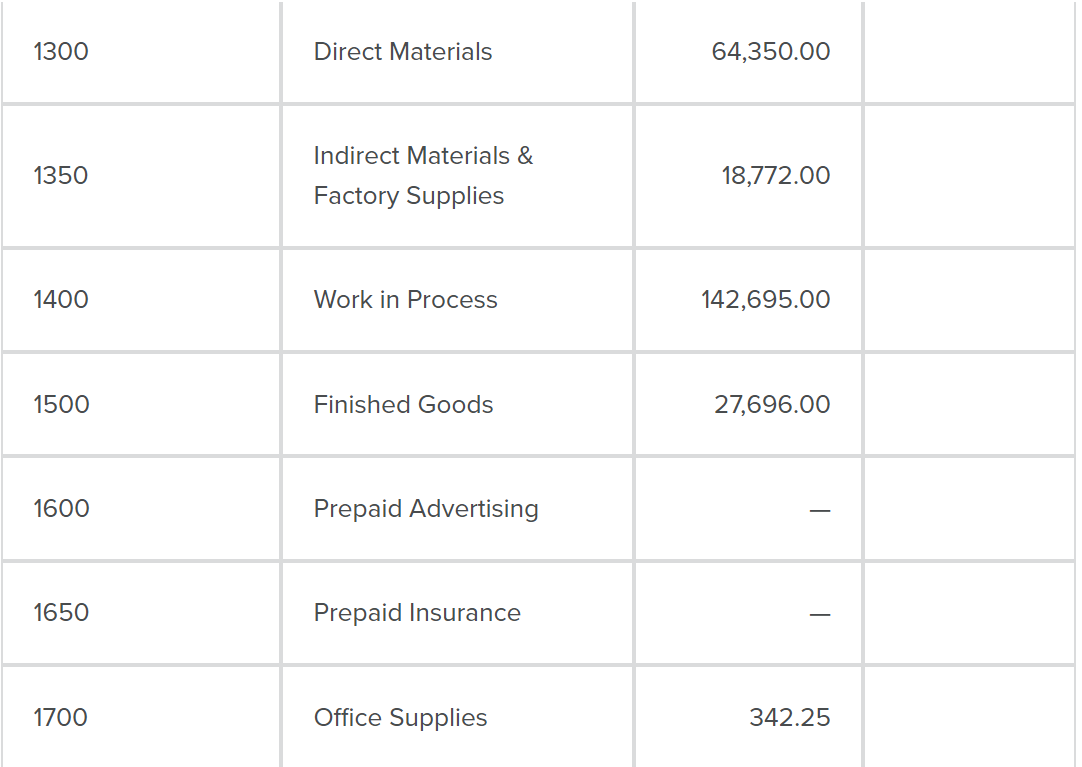

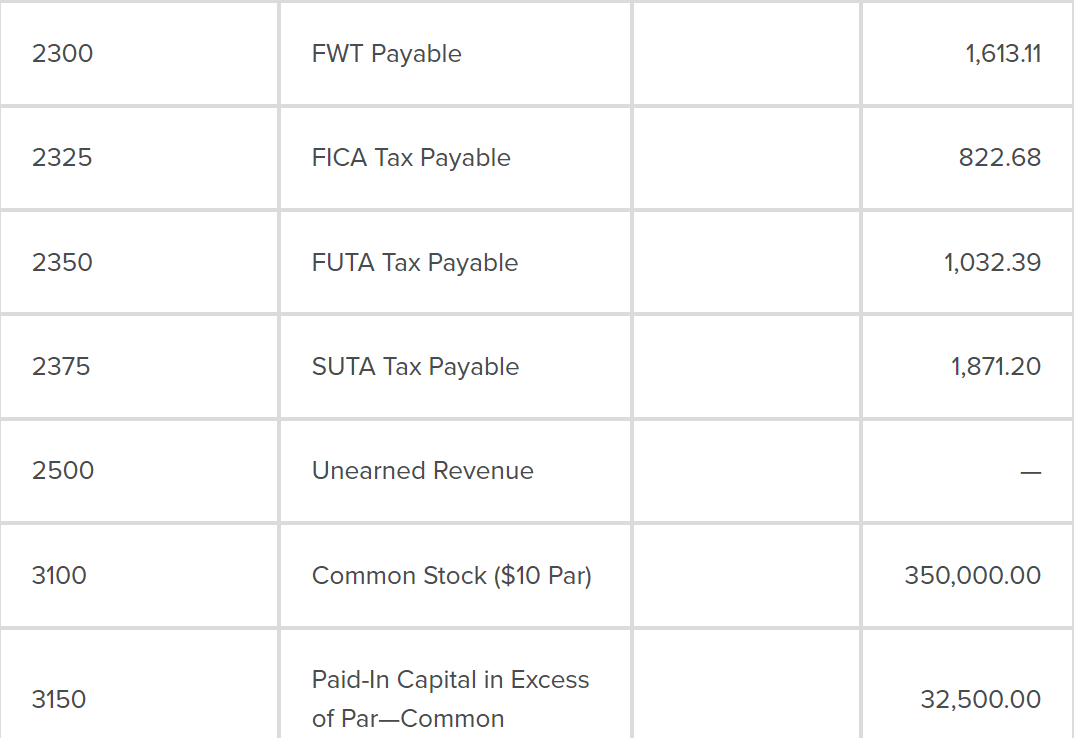

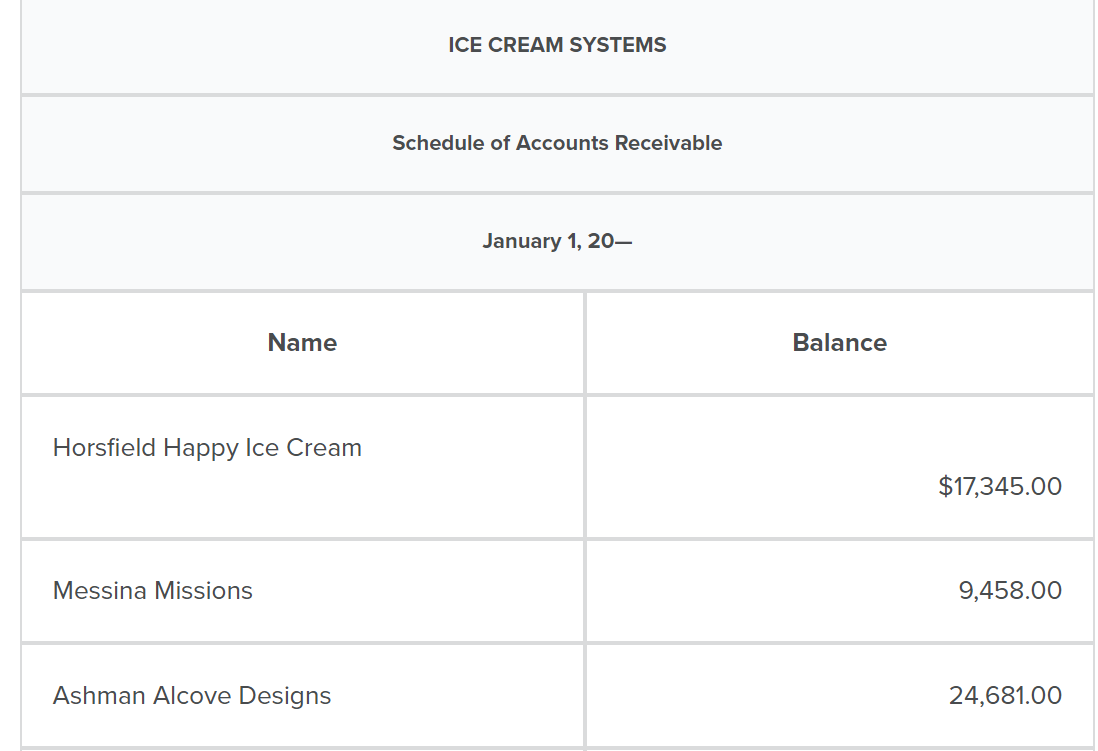
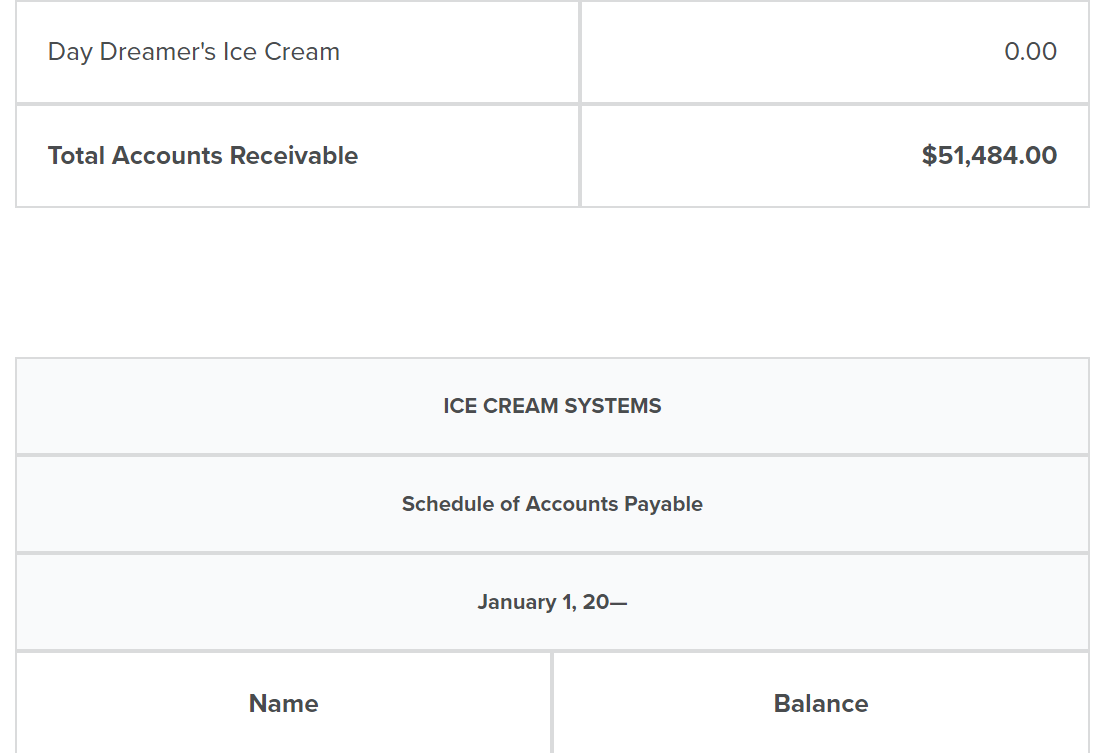
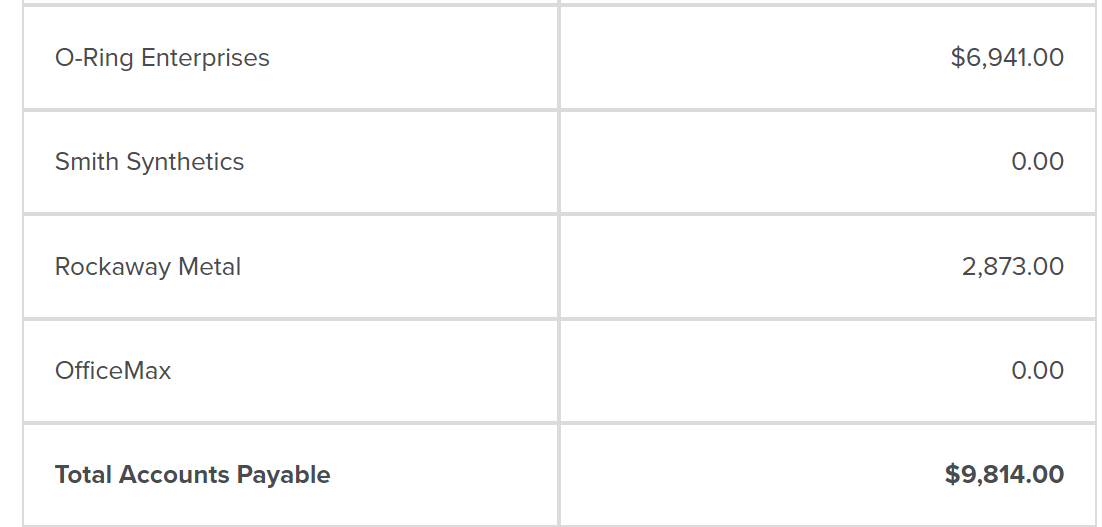
Narrative of Transactions January 2—Paid Mass Media $4,200.00 for prepaid advertising in local newspapers for the next 12 months. January 2—Paid Pierce Properties $2,750.00 for January rent. Of this amount, 25% is for office facilities and 75% is for factory facilities.
January 2—Paid Owen’s Insurance $6,000.00 for prepaid insurance for the first quarter of the year January 3—Received a check from Horsfield Happy Ice Cream as partial payment on account in the amount of $5,000.00.
January 3—Paid Rockaway Metal the balance of $2,873.00 on account. January 4—Sold two ice cream systems to Day Dreamer’s Ice Cream. The estimated direct labor is $8,200.00.
The estimated direct material is $3,350.00. The estimated indirect material is $350.00. Day Dreamer’s is to be billedin the amount of $20,925.00 on account. A check for $5,000.00 will be collected as a deposit against that sale.
The start date will be January. The date promised will be January 23. Assign the contract to Job 74.
January 5—Mountain Swirl Ice Cream purchased and took delivery of one ice cream machine for $7,500.00. Record the sale and the cost of the sale. Markup is 150% of cost. Transfer cost from Finished Goods to COGS.
January 6—Purchased indirect material on account from Electrical Systems Corp. in the amount of $3,643.00. Set up a new Accounts Payable account, and record the purchase.
January 6—Purchased factory supplies on account from Grommet Supplies in the amount of $847.21. Set up a new Accounts Payable account, and record the purchase.
January 9—Assign the manufacture of one ice cream machine to Job 75. A direct material requisition shows $1,450.00 of direct materials, and an indirect materials requisition shows $170.00 of indirect materials. A time card
shows $3,650.00 of direct labor for the completed job. Factory overhead is based on 25% of direct labor cost.
Transfer the completed job from Direct Material and Indirect Material to the Finished Goods account.
When making the journal entry for applying direct labor, debit Finished Goods for the gross pay and credit
FWT Payable and FICA Tax Payable for the appropriate amounts with the net pay going to Salaries Payable.
January 10—Receive a check from Horsfield Happy Ice Cream as partial payment on account in the amount of $5,000.00.
January 10—Receive a phone bill in the amount of $1,402.22 from Unique Telephone Systems on account. January 15—Paid Liberty Bank $2,435.79 for December payroll taxes payable for the amounts of FWT Payable, $1,613.11; FICA Tax Payable, $822.68.
January 15—Assign Job 76 to Cold Refrigeration for the purchase of a refrigeration system. The start date will be January 16. The completion date will be no later than February 28. The estimated direct material is $9,175.00.
The estimated indirect material is $1,860.00. The estimated direct labor is $15,600.00. The contract amount is
$45,800.00. A deposit of $10,000.00 was provided by Cold Refrigeration in signing the contract. The deposit is
unearned revenue. Half of the contract will be billed upon 50% completion with the deposit applied against that
billing with the remaining amount due immediately. A quarter of the contract will be billed upon 75% completion
of the contract with the amount due immediately. The remaining amount of the contract is to be billed
when the job is 100% complete and is payable within 30 days of the billing.
January 16—Purchased $4,441.00 of factory supplies from Johnston Equipment paid in cash. January 16—Purchased $2,965.00 of direct materials from Smith Synthetics on account. January 16—Purchased $427.50 of office supplies from OfficeMax on account. January 19—Apply from direct materials requisition $2,800.00 of direct materials. Apply from indirect materials requisition $325.00 of indirect materials. Apply from time cards $7,950.00 of direct labor to Job 74 completing the job.
Applied factory overhead is based on 25% of direct labor cost. Transfer the completed job to the COGS account from
Direct Material and Indirect Material and Factory Overhead accounts. When making the journal entry for applying
direct labor, debit COGS for the gross pay and credit FWT Payable and FICA Tax Payable for the appropriate
amounts with the net pay going to Salaries Payable.
January 20. —Paid the electric bill from Susquehanna Electric in the amount of $2,356.21 for the month of December. Allocate 30% to Factory Overhead.
January 20—Paid the FUTA Tax Payable for the previous year. January 20—Paid the SUTA Tax Payable for the previous year. January 23—Ashman Alcove Designs paid the balance on account. January 27—Paid O-Ring Enterprises the balance owed on account. January 27—Paid post office $300.00 cash for postage added to postage meter. January 28—Apply from direct materials requisition $4,600.00 of direct materials. Apply from indirect materials requisition $950.00 of indirect materials. Apply $8,000.00 (from time cards) of direct labor and factory overhead to
Job 76, completing 50% of the job. Factory overhead is based on 25% of direct labor cost. Transfer the partially
completed job from Direct Material and Indirect Material to WIP. When making the journal entry for applying direct
labor, debit WIP for the gross pay and credit FWT Payable and FICA Tax Payable for the appropriate amounts with
the net pay going to Salaries Payable. Set up the accounts receivable and bill Cold Refrigeration for 50% of the
contract on account, applying the initial $10,000.00 deposit against the billing.
January 29—Received a check from Cold Refrigeration in the amount of $12,900.00 on account. January 31—Received the following data for the monthly payroll:
Direct labor (already recorded) $19,600.00
Sales commission 5,132.50
Officers’ salaries 5,000.00
Office salaries 1,920.00Record the monthly payroll. Direct labor payroll has already been recorded, as it was incurred in January. Debit other salary expense accounts for the appropriate amounts; credit FWT Payable for 15% of gross pay; credit
FICA Tax Payable for 7.65% of gross pay; and credit Salaries Payable for the net pay. Record the payroll taxes
imposed on the employer for all personnel for the month of January. (Prepare the “Schedule of Employer
Payroll Taxes Allocation” using the appropriate tax rates.)
January 31—Received a check from Messina Missions for the balance on account. January 31—Received a check from Horsfield Happy Ice Cream for the remaining balance on account. January 31—Paid all employee wages earned in January. - Set up the General Ledger accounts, Accounts Receivable, and Accounts Payable accounts. Use the following blank forms (make as many copies as necessary). Insert the beginning balances from the Trial Balance and Schedules of Accounts Receivable and Payable. You can also obtain copies of the blank forms by going to the Financial Accounting section of the Penn Foster Library and selecting the Blank Forms tab
2. Journalize the entries shown in the Narrative of Transactions for the month of January in the General Journal. Use the following blank forms (make as many copies as necessary) or print the forms from the Financial Accounting section of the Penn Foster Library. When using the Work in Process account, be sure to post to the appropriate Job Cost Record.
3.Post the general journal entries to the General Ledger, the Accounts Receivable Ledger, and the Accounts Payable Ledger. Use the Post Ref. column to ensure that each line item of the journal entries is posted correctly to each general ledger account. Posting from the journal to the ledger is nothing more than rearranging the information; however, focus and concentrate because it’s easy to make a mistake.
4.Calculate the balances in the general ledger accounts. Use an Excel spreadsheet or a printing calculator to run the numbers several times. Don’t use a hand-held calculator, as it’s far too easy to make a mistake using it.
5.Prepare the Schedules of Accounts Receivable and Accounts Payable.
6.Prepare an Unadjusted Trial Balance using the balances from the general ledger accounts.
- Journalize the following adjusted entries in the general journal.
Adjusting Entries January 31—Expense Prepaid Advertising for the month of January. January 31—Expense Prepaid Insurance for the month of January. January 31—Office supplies physical inventory as of January 31 is $276.21. January 31—Depreciation for the month of January for Factory Equipment is $2,987.12.
Depreciation for Office Equipment is $266.99.January 31—Close out Factory Overhead of $190.24 to Cost of Goods Sold. 8.Post the adjusting journal entries to their respective ledger accounts and calculate new balances for those accounts.
9.Prepare an Adjusted Trial Balance using the balances from the general ledger accounts. Use the blank form provided in step six.
10.Prepare an Income Statement following the formats shown in the Example Company Statements using the following blank form as a worksheet or by visiting the Financial Accounting section of the Penn Foster Library and downloading the forms:
11.Journalize and post the closing journal entries in the general journal. Jan. 31— Prepare closing entries to close revenue and expense accounts to Income Summary and transfer the net income to Retained Earnings.
12.Post the closing journal entries to the respective ledger accounts and calculate new balances for those accounts.
13.Prepare a Post-Closing Trial Balance using the balances from the general ledger accounts. Use the blank form that was provided in step six.
14. From the Post-Closing Trial Balance, create the Balance Sheet following the formats shown in the Example Company Statements using the following blank form as a worksheet or by visiting the Financial Accounting section of the Penn Foster Library and downloading the form:After creating the balance sheet, income statement, and the post-closing trial balance on the blank forms provided, the financial statements must now be typed up in one Word document and saved as a .doc or .docx file.
